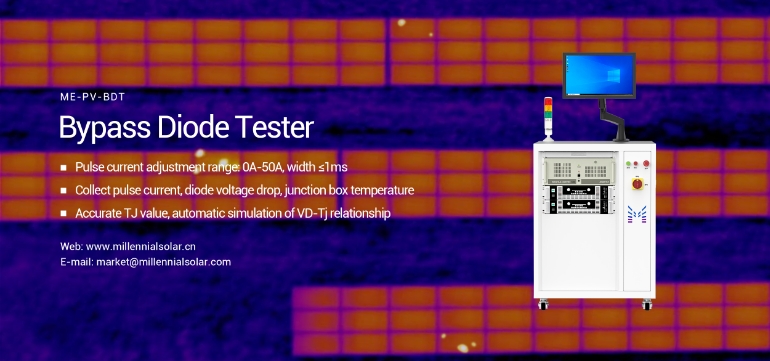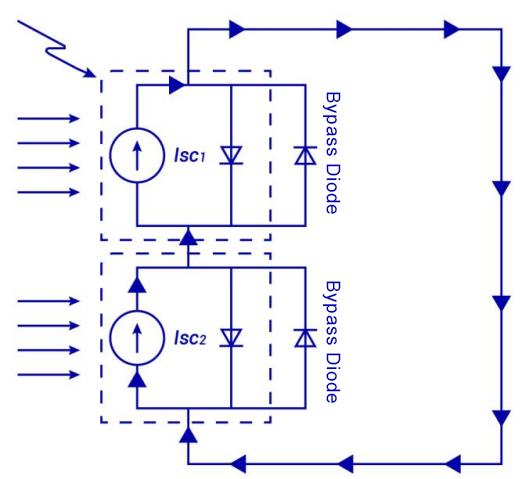
Quantum Efficiency Tester
PL/EL Integrated System
PV-Reflectumeter
3D Confocal Microscope
In-Line Four Point Probe Tester
Four Point Probe Tester
In-Line Thin Film Thickness Tester
Raman Spectrometer
FTIR Spectrometer
Spectrophotometer
Automatic Spectroscopic Ellipsometer
Contact Resistance Tester
Ultra depth of field 3D microscope
Auto Visual Tester
VMM PV Vision Measuring Machine
Solar Cell Horizontal Tensile Tester
Steady State Solar Simulator for Solar Cell
Solar Cell UV Aging Test Chamber
Solar Cell Comprehensive Tensile Tester
Visual Inspection Tester
Wet Leakage Current Tester
PV Module EL Tester
PV Module UV Preconditioning Chamber
Steady State Solar Simulator for PV Module
Current Continuous Monitor
Potential Induced Degradation Test
Bypass Diode Tester
LeTID Test System
Reverse Current Overload Tester
Impulse Voltage Tester
Hipot Insulation Tester
Ground Continuity Tester
Hipot Insulation Ground Tester
Damp Heat Test Chamber
Humidity Freeze Test
Thermal Cycle Test Chamber
Dynamic Mechanical Load Tester
Static Mechanical Load Tester
Hail Impact Tester
Robustness of Termination Tester
Module Breakage Tester
Cut Susceptibility Tester
Peel Shear Strength Tester
Universal Testing Machine (Single-arm)
Universal Testing Machine (Double-arm)
Glass Transmittance Tester
Acetic Acid Test Chamber
EVA Degree of Crosslinking Test System
Junction Box Comprehensive Tester
Drop ball tester
Semi-automatic scanning four-probe tester
Stylus Profilometer
Maximum Power Point Tracker
Perovskite Glass Transmittance Tester
Perovskite P1 Laser Scribing Multifunctional Testing Machine
Perovskite Online PL Tester
Perovskite Online Sheet Resistance Tester
Online Perovskite Film Thickness Tester
Perovskite Process Inspection Workstation
Portable IV Curve Tester
Portable EL Tester
Portable Thermal Imaging Tester
Solar Module Multi-Channel Testing System
PV Inverter Power Quality Tester
Drone EL Tester
IV Tester
IVEL Cell Sorting Machine
Introduction to Generation and Prevention Measures of Hot Spot Effect of Modules
Date : 2024-08-05Views : 275
Bypass diodes are standard accessories in photovoltaic modules. Their function is to eliminate the hot spot effect caused by reverse bias due to mismatch, which will cause power reduction and damage to photovoltaic modules. Therefore, the design and corresponding detection of a reliable bypass diode device are crucial. Millennial Bypass Diode Tester ME-PV-BDT tests the bypass diode function test and thermal performance test in the IEC61215 standard. It is equipped with temperature environment chamber to evaluate the reliability of bypass diodes in high temperature working environments, providing an important reference for protecting circuit stability, circuit design and optimization, and fault analysis.

Mismatch effect in photovoltaic modules
Mismatch effect refers to the phenomenon that occurs when interconnected solar cells or modules do not have the same performance or do not work under the same conditions. Mismatch occurs when the parameters of one cell in the module are significantly different from the others.
The impact and power loss caused by the mismatch effect depend on the operating point, circuit structure layout and parameters of the affected solar cells in the photovoltaic module.
Because most photovoltaic modules are in series, series mismatch is the most common type of mismatch. Series mismatch is divided into short-circuit current mismatch and open-circuit voltage mismatch, among which short-circuit current mismatch is the most common and most serious. It is usually caused by shadowing or cell failure.
Hot spot effect
1. When the local cells of the photovoltaic module are blocked by leaves, dust, bird droppings and other objects;
2. A cell in the photovoltaic module itself has defects, and the power generation efficiency is lower than that of other cells;
3. Poor welding during the module manufacturing process and the PID potential induced attenuation effect in the later stage;
Once the total operating current of the module exceeds the short-circuit current of these "problem cells", the voltage of these cells will be biased into a load, thereby consuming the power of other "normal cells" inside the module. Therefore, the "problem cell" will be transformed into an energy-consuming component and heated by the energy generated by the cells in the same string, resulting in local overheating, thus producing a hot spot effect.

(Left) Shadow causes (Middle) Cell damage (Right) Hot spot effect of photovoltaic modules caused by grid line damage
A foreign organization conducted a three-year investigation into the causes of photovoltaic module degradation and failure, performed performance test box analysis, and concluded that 25% of the problems were caused by the hot spot effect.

Statistics on the distribution of causes of degradation and failure of photovoltaic modules by a foreign institution
If the heat generated by the hot spot effect is too great, it may cause local yellowing, burning, bulging, delamination, or even glass breakage on backplane. In severe cases, it may cause a fire.
Effective methods to reduce hot spot effect
By using bypass diodes at both ends of each string of cells, the damage caused by hot spot effect to the module can be effectively avoided.
Working principle of bypass diode:
The diode is connected in parallel with the solar cell in the opposite direction. Under normal working conditions, the voltage of each cell is forward biased, so the voltage of the bypass diode is reverse biased, which is equivalent to an open circuit and has no effect. When one of the cells in the series is blocked or mismatched, the voltage is reverse biased. At this time, the bypass diode is equivalent to a wire and plays a shunt role. The photoelectric voltage generated by other normal series cells can still be used by the external load, thereby reducing the risk of hot spot effect to the entire photovoltaic module.

Working principle diagram of bypass diode to avoid hot spot heating effect
Therefore, the design and corresponding detection of a reliable bypass diode device are crucial for photovoltaic modules.
IEC61215 standard - MQT18 bypass diode test
MQT 18.1 bypass diode thermal performance test:
heat the photovoltaic module and junction box to 30℃, 50℃, 70℃, 90℃, apply a 1ms pulse current (Isc under STC conditions) to the bypass diode, test its forward voltage drop VD respectively, and draw a fitting curve VD-Tj; heat the module to 75℃, power on Isc under STC conditions for 1h, measure the VD of each bypass diode, increase the current to 1.25 times Isc, and maintain for 1h.
MQT 18.2 bypass diode function test:
pass forward current, test the diode forward voltage drop, and determine the performance; block the module battery, measure the I-V curve, and determine the performance.
Bypass Diode Tester

E-mail: market@millennialsolar.com
Bypass Diode Tester ME-PV-BDT uses Advantech's high-quality industrial computer to ensure long-term stable operation of the equipment. The equipment has both thermal performance testing and thermal runaway testing systems, can apply pulse power, pulse width ≤1ms, and provide forward and reverse switching DC power. With environmental chamber, temperature control can be achieved.
● Pulse current adjustment range: 0A-50A, width ≤1ms
● Can collect pulse current, diode voltage drop, junction box temperature
● Accurate TJ value, automatic simulation of VD-Tj relationship
Although the hot spot effect of photovoltaic modules is a normal phenomenon, it should be avoided as much as possible, from the early production of battery cells to the inspection after the module manufacturing is completed, from all links to reduce the probability of affecting the occurrence of hot spot effect, and package the photovoltaic system to maintain good power output. With advanced and precise inspection equipment, Millennial Solar provides comprehensive testing services for IEC61215 and IEC61730 standards to help manufacturers improve the quality assurance of photovoltaic modules.

































































